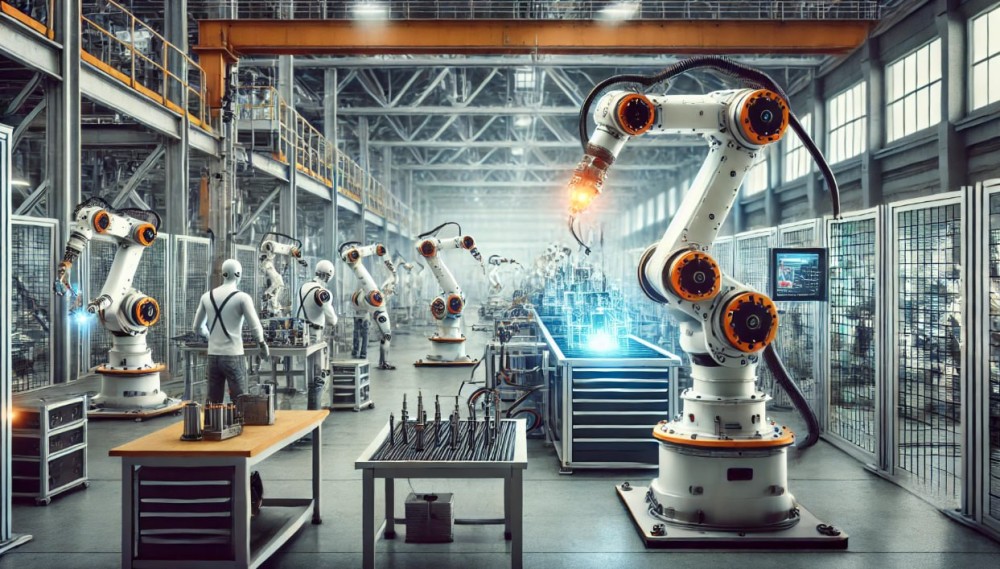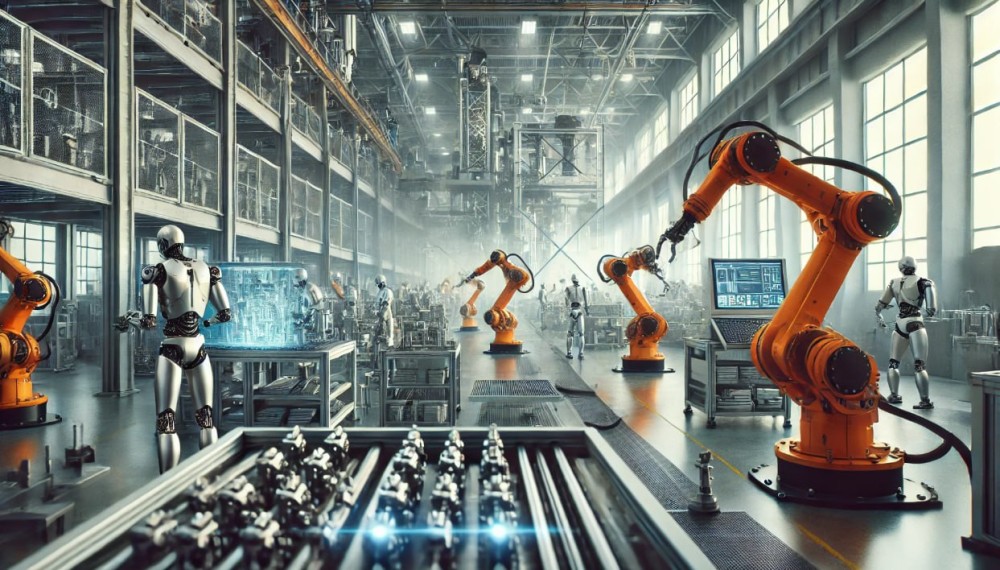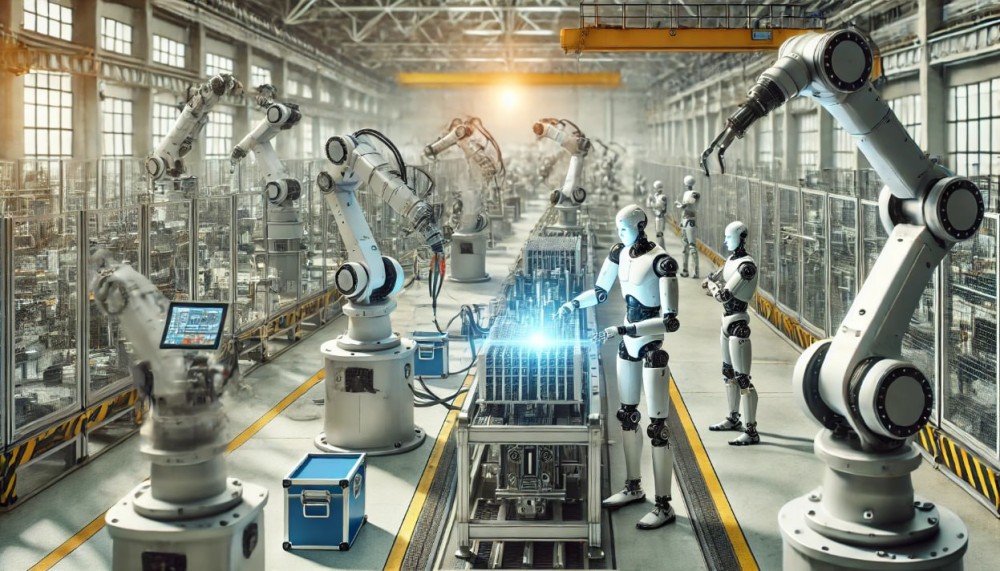In the ever-evolving landscape of technology, 2024 stands as a pivotal year for the continued integration of automation and robotics across industries. These advancements are not simply enhancing efficiency—they are fundamentally transforming the very fabric of modern production and the labor market. At the heart of these changes are sophisticated robots, machine learning algorithms, and automation systems that work in concert to deliver unprecedented levels of productivity and adaptability. The effects of this transformation are multifaceted, impacting not only how businesses operate but also how workers navigate the labor market. The following analysis examines the current state of automation and robotics, their implications for the labor market, and provides predictions for the coming years.
Modern Automation and Robotics: The State of Play in 2024
Automation and robotics have moved beyond the factory floor and are now a ubiquitous presence across sectors such as healthcare, logistics, agriculture, and even customer service. In 2024, advances in artificial intelligence (AI) and machine learning (ML) are driving the development of robots that are capable of more complex, nuanced tasks. These systems are becoming increasingly autonomous, requiring less human intervention for operations that once depended on human decision-making.
- Industrial Robotics: Traditionally, robots in manufacturing were designed for repetitive tasks, such as welding or assembly. However, modern robots are equipped with AI, enabling them to make real-time decisions, adapt to their surroundings, and collaborate with human workers. Robots such as collaborative robots (cobots) are designed to work alongside humans, providing flexibility in production lines where both dexterity and efficiency are required.
- Automation in Services: In sectors like logistics, automation has come to the forefront with innovations like automated warehouses, delivery drones, and autonomous trucks. Retail giants such as Amazon and Alibaba are heavily investing in these technologies to streamline supply chain management, reduce costs, and enhance speed.
- Healthcare and Service Industries: Robotic surgery systems and automated diagnostic tools have become invaluable in the medical field, increasing the accuracy of procedures and reducing human error. In customer service, AI-powered chatbots and automated response systems are reshaping how companies handle customer interactions, delivering personalized service at scale.
The Labor Market: Opportunities and Challenges

The growing adoption of automation and robotics poses both significant challenges and opportunities for the global labor market. On one hand, these technologies drive operational efficiency, reduce the cost of production, and create new economic opportunities. On the other hand, they lead to displacement in traditional job roles, particularly in sectors dependent on routine manual labor.
Displacement of Jobs
One of the most immediate effects of automation is the displacement of jobs that involve repetitive tasks. Industries such as manufacturing, logistics, and retail are seeing reductions in workforce demand for roles that can be automated. However, this is not an outright loss. Many experts agree that while automation eliminates certain jobs, it also creates demand for new, more specialized roles.
- Reskilling and Upskilling: Workers displaced by automation can find new opportunities through reskilling and upskilling initiatives. For example, roles related to the programming, maintenance, and oversight of automated systems are increasingly in demand. This requires collaboration between businesses, governments, and educational institutions to ensure the workforce is adequately prepared for these shifts.
Creation of New Jobs
While automation displaces certain roles, it simultaneously generates new ones. These include positions in robotics engineering, AI development, data analytics, cybersecurity, and IT management. These roles not only compensate for job losses but also contribute to creating high-paying, specialized employment opportunities.
Wage Polarization
However, the rapid integration of automation does come with the risk of exacerbating wage polarization. As companies automate low-skill jobs, the labor market is increasingly divided into high-skill, high-wage jobs (AI specialists, data scientists) and low-skill, low-wage jobs that cannot be automated (personal care, hospitality). This divide may widen as automation continues to grow unless there are systemic efforts to offer retraining opportunities and ensure broad access to education in technology-related fields.
Impact on Production Processes: Efficiency Meets Flexibility

Automation is driving a shift towards smart manufacturing—a model in which production processes are optimized using real-time data, machine learning algorithms, and interconnected systems known as the Internet of Things (IoT). This new paradigm offers manufacturers unprecedented levels of flexibility, efficiency, and customization.
- Smart Factories: The integration of robotics with IoT and AI allows factories to dynamically adjust production lines based on real-time data. For instance, if a part of the supply chain is delayed, an automated factory can reroute resources, reduce downtime, and keep production on track. This adaptability reduces waste and increases efficiency, leading to cost savings.
- Customization at Scale: One of the most promising trends in automation is the ability to offer mass customization. With advanced robotics and automated systems, manufacturers can produce highly customized products at the same efficiency levels as mass-produced goods. This is revolutionizing industries like automotive, electronics, and even apparel.
Forecast for the Coming Years
Looking ahead, the pace of automation and robotics adoption is expected to accelerate. The key trends driving this expansion include advancements in AI, the proliferation of IoT devices, and the increasing affordability of robotic technologies. Here’s what we can expect in the next 5-10 years:
- Rise of AI-driven Automation: As AI continues to mature, the integration of AI into robotic systems will enable even greater levels of automation. Robots will not only be capable of executing tasks but also of learning from their environment, making autonomous decisions, and continuously improving their performance. This will particularly impact sectors such as healthcare, transportation, and manufacturing.
- Human-Robot Collaboration: The future of robotics lies in collaborative work between humans and machines. Cobots are just the beginning. By 2030, we may see widespread adoption of robots that work seamlessly alongside humans, enhancing productivity without completely replacing human labor. In sectors like healthcare, construction, and education, this collaboration will be key to driving efficiency while maintaining the human touch.
- Redefining Job Roles: As automation becomes ubiquitous, new job roles will emerge, many of which we cannot yet fully define. The challenge lies in ensuring that the workforce is equipped with the necessary skills to thrive in this new environment. Investment in education, training programs, and a focus on lifelong learning will be essential to meet the demands of the future labor market.
Conclusion: Navigating the Future of Work
The automation and robotics revolution is reshaping industries at an unprecedented pace. For IT recruitment companies, this presents a dual opportunity: to help businesses find the talent necessary to implement these technologies and to guide workers through the changing landscape of job roles. The future labor market will demand individuals skilled in technology, data analysis, and automation system management. Meanwhile, companies that effectively harness the power of robotics and automation will gain a competitive edge in terms of efficiency, customization, and cost savings.
The challenge ahead is not merely technological—it is also societal. Governments, businesses, and educational institutions must collaborate to ensure that the workforce of tomorrow is prepared for the rapidly evolving demands of the labor market. Those who can adapt, learn, and innovate will thrive in this new world of automation.
As we look toward the next decade, the continued growth of automation and robotics promises both disruption and opportunity. The companies and individuals who embrace change, invest in skills development and understand the symbiotic relationship between humans and machines will be best positioned to succeed in the years ahead.


